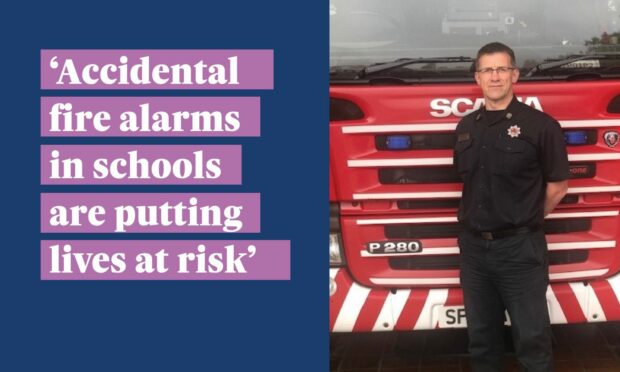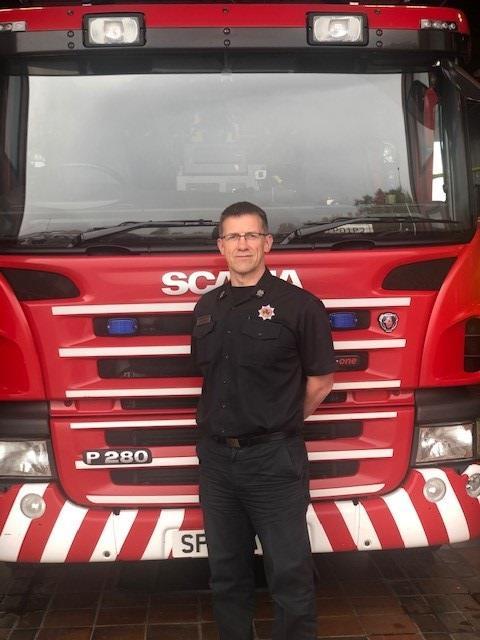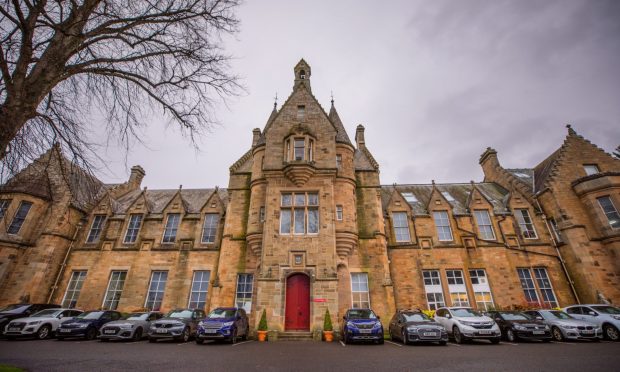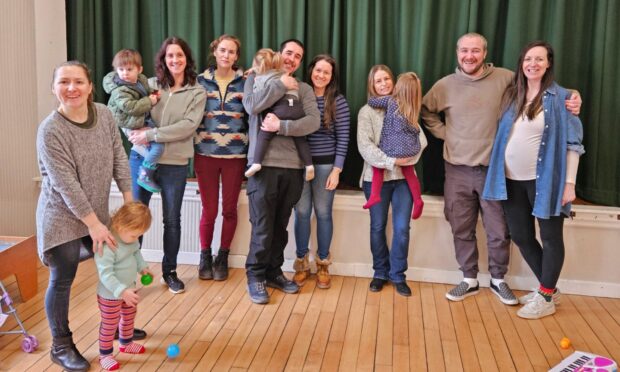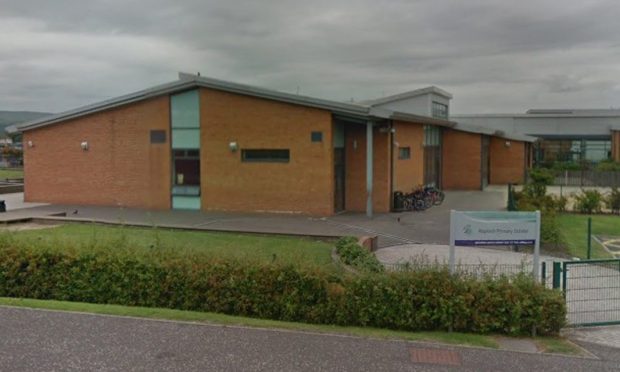Lives are being put at risk by accidental false alarms in local schools, a fire chief has warned, as unnecessary ‘blue light’ journeys cost £3 million of public funds.
There have been more than 1,500 unwanted fire alarms in schools since 2018, figures have revealed.
An unwanted fire alarm signal (UFAS) is triggered when an automatic detection system reacts to steam, aerosol sprays, cigarette smoke or cooking.
Stephen Wood, Scottish Fire and Rescue Service local senior officer for Dundee, Angus and Perth and Kinross, said the resources used could help “keep the people of Scotland safe” if UFAS were significantly cut.
The false alarm call-outs cost the service approximately £1,970 each time they attend a suspected incident and firefighters spend an average of 22 minutes on the scene of each UFAS, taking the lifesaving service away from real emergencies.
Mr Wood said: “We continue to work with our partners and duty holders to maintain a positive and effective approach in reducing unwanted fire alarms and the number of unnecessary blue light journeys.
“We encourage the use of automatic fire detection as it helps save lives and protect buildings.
“However, across Scotland, we attend almost 30,000 UFAS incidents each year.
“This not only impacts on our resources but also causes significant disruption within affected properties and we believe we could do more to keep the people of Scotland safe if we change how we respond to these false alarms.”
How many accidental call-outs were there?
A total of 1,592 false alarm incidents were recorded in schools by local fire departments from January 2018 to December 2020 – and almost all of these were UFAS.
Figures obtained through a series of freedom of information requests show there were 711 UFAS in Fife, 141 in Angus, 328 in Dundee and 297 in Perth and Kinross.
These call-outs hit the fire service hard to the tune of more than £1 million each year and have cost £3,136,240 over the three year period.
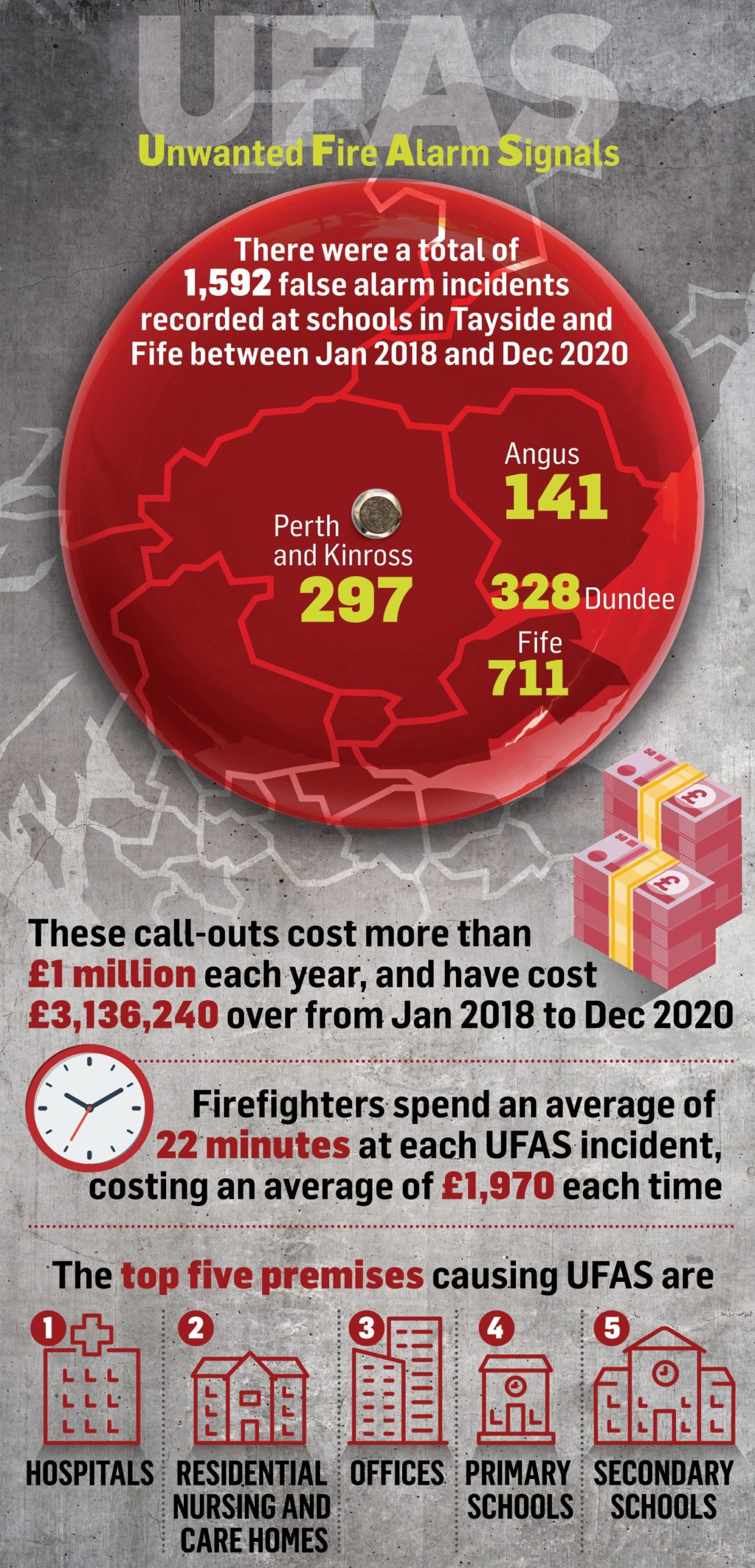
Perth High School recorded the largest number of unwanted alerts since the start of 2018 with 47 UFAS incidents.
Auchterarder Community School had 23, and Kinross Primary School, 17.
Craigie High School, in Dundee, had 37 over the same period and St Paul’s RC Academy had 35, followed by Sidlaw View Primary School with 27.
Dunfermline High School, in Fife, had 31 UFAS since 2018, while Cairneyhill Primary School had 29 and Valley Primary School, Kirkcaldy, had 23.
In Angus, Carnoustie High School recorded 18, while Burnside Primary School, also in the town, had 14 and Forfar Academy, 11.
Intentional false fire alarms in schools
Malicious fire alarms, where signals were triggered intentionally, were also recorded. There were 31 across Fife schools in the three year period, 21 in Dundee, 16 in Perth and Kinross and five in Angus.
The head of education and children’s services at Fife Council, Shelagh McLean, said that schools work with local fire officers to ensure children understand the dangers of fire and the implications of hoax calls.
An Angus Council spokesman said: “We fully recognise the resource implications that false alarms have for our fire and rescue colleagues and the disruption they cause to the school day.”
A Dundee City Council spokesman said the council is working closely with the SFRS to educate pupils and staff about fire safety.
Perth and Kinross Council did not respond to our request for comment.
